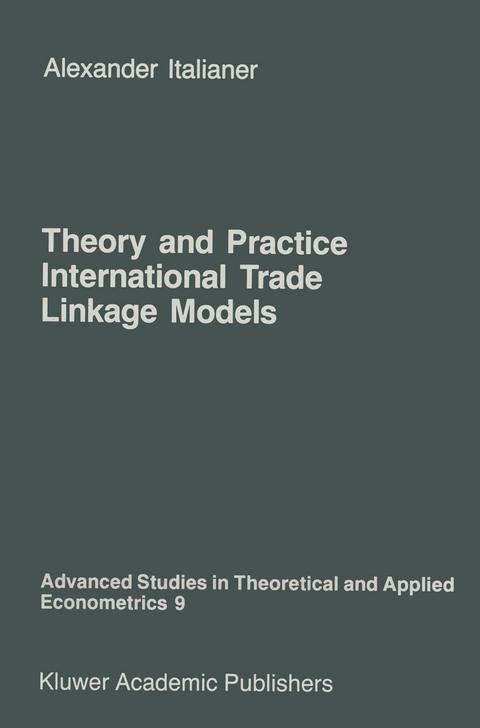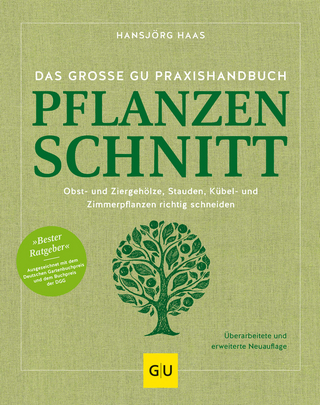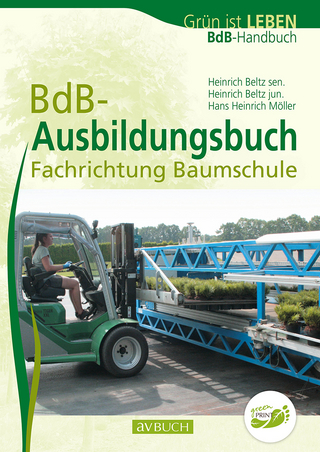
Theory and Practice of International Trade Linkage Models
Springer (Verlag)
978-94-010-8491-8 (ISBN)
1: The Linkage System.- 1.1 Introduction.- 1.2 Some Conventions.- 1.3 Elements of a World Trade Linkage Model.- 1.4 Methods of Trade Linkage.- 1.5 A Sluice.- Footnotes to Chapter 1.- 2: Import Allocation Models.- 2.1 Introduction.- 2.2 Theoretical Considerations.- 2.2.4 The adding-up condition.- 2.3 Empirical Models.- 2.4 Summary and Concluding Remarks.- Footnotes to Chapter 2.- 3: On the Use of Elasticities of Substitution.- 3.1 Introduction.- 3.2 Basic Definitions.- 3.3 The Nature of the Experiment.- 3.4 A Framework for Elasticities.- 3.5 A Generalisation of the Two-Factor Case ?.- 3.6 Short-Run Elasticities of Substitution.- 3.7 Constant Elasticities of Substitution.- 3.8 Summary and Concluding Remarks.- Footnotes to Chapter 3.- 4 Maximum Likelihood Estimation of Nonlinear Models with Linear Constraints on the Functional Form.- 4.1 Introduction.- 4.2 Constrained Model and Lopped Model.- 4.3 A Homoscedastic Covariance Matrix.- 4.4 A Special Case with a Heteroscedastic Covariance Matrix.- 4.5 Summary and Conclusions.- Footnotes to Chapter 4.- 5: A Model with Pairwise Differing Elasticities of Substitution.- 5.1 Introduction.- 5.2 The Cresh Model with Constant Returns to Scale.- 5.3 Three Approximations.- 5.4 An Interpretation as Total Allocation Model.- 5.5 Summary and Conclusions.- Footnotes to Chapter 5.- 6: Econometric Specification.- 6.1 Introduction.- 6.2 A Further Simplification.- 6.3 Stochastic Specification.- 6.4 Static Model Without Time Trend.- 6.5 Static Model With Time Trend.- 6.6 Dynamic Model Without Time Trend.- 6.7 Dynamic Model With Time Trend.- 6.8 Summary and Concluding Remarks.- Footnotes to Chapter 6.- 7: The Data.- 7.1 Introduction.- 7.2 Compatibility of Classifications.- 7.3 Price Indices; Current and Constant Prices.- 7.4 Anomalies.- 7.5 The Domestic Aggregate.- 7.6 Concluding Remarks.- Appendix 7.A Goods Classification.- Appendix 7.B Composition of the Zones.- Footnotes to Chapter 7.- 8: Estimation.- 8.1 Introduction.- 8.2 Model Characteristics.- 8.3 The Covariance Matrix.- 8.4 The Aggregate Trade Model.- 8.5 Models Per Category of Goods.- 8.6 Summary and Concluding Remarks.- Appendix 8.A Detailed Estimation Results.- Footnotes to Chapter 8.- 9: Hypothesis Testing.- 9.1 Introduction.- 9.2 The General Test Procedure.- 9.3 Weak Separability.- 9.4 Classification of Partners.- 9.5 Classification of Goods.- 9.6 Summary and Concluding Remarks.- Appendix 9.A A Small-Sample Correction for the Likelihood Ratio Test.- Footnotes to Chapter 9.- 10: Conclusions.- 10.1 Theory.- 10.2 Practice.- 10.3 Suggestions for Further Research.- References.- Author Index.
| Reihe/Serie | Advanced Studies in Theoretical and Applied Econometrics ; 9 |
|---|---|
| Zusatzinfo | 408 p. |
| Verlagsort | Dordrecht |
| Sprache | englisch |
| Maße | 155 x 235 mm |
| Themenwelt | Sachbuch/Ratgeber ► Natur / Technik ► Garten |
| Wirtschaft ► Allgemeines / Lexika | |
| Wirtschaft ► Volkswirtschaftslehre ► Ökonometrie | |
| ISBN-10 | 94-010-8491-2 / 9401084912 |
| ISBN-13 | 978-94-010-8491-8 / 9789401084918 |
| Zustand | Neuware |
| Informationen gemäß Produktsicherheitsverordnung (GPSR) | |
| Haben Sie eine Frage zum Produkt? |
aus dem Bereich


